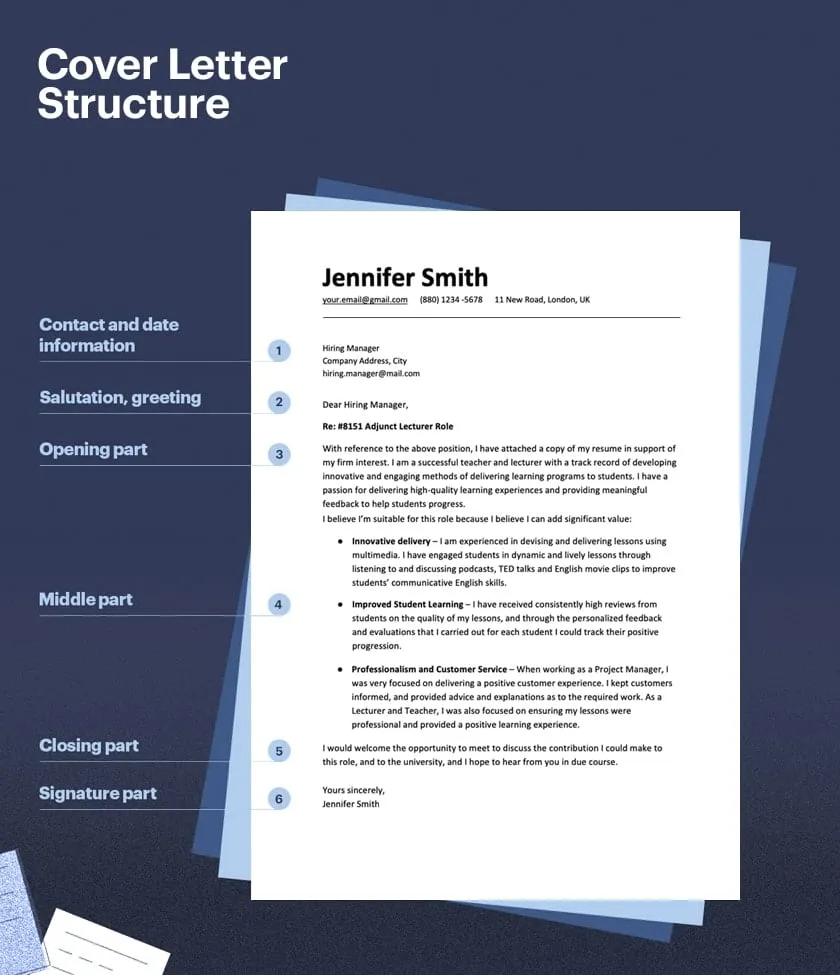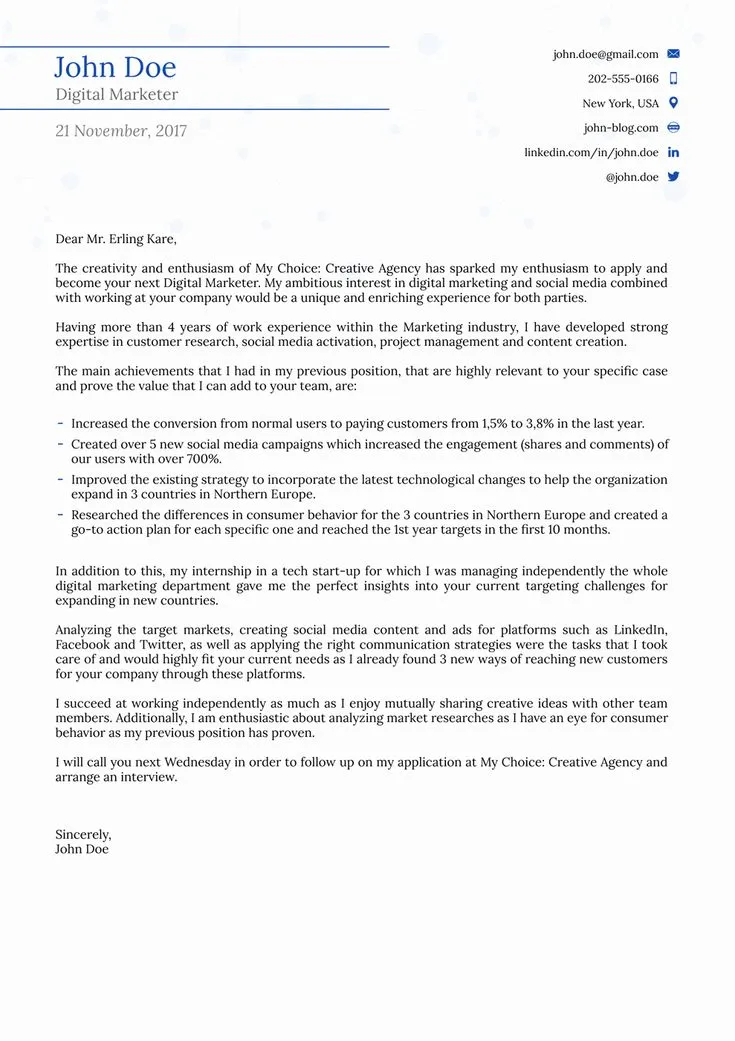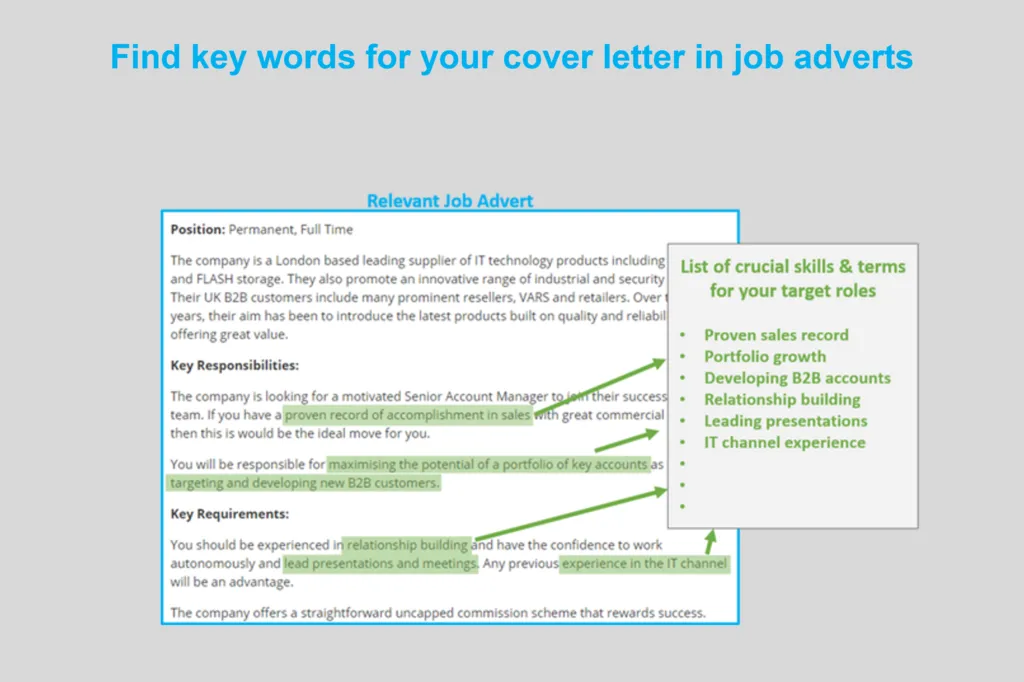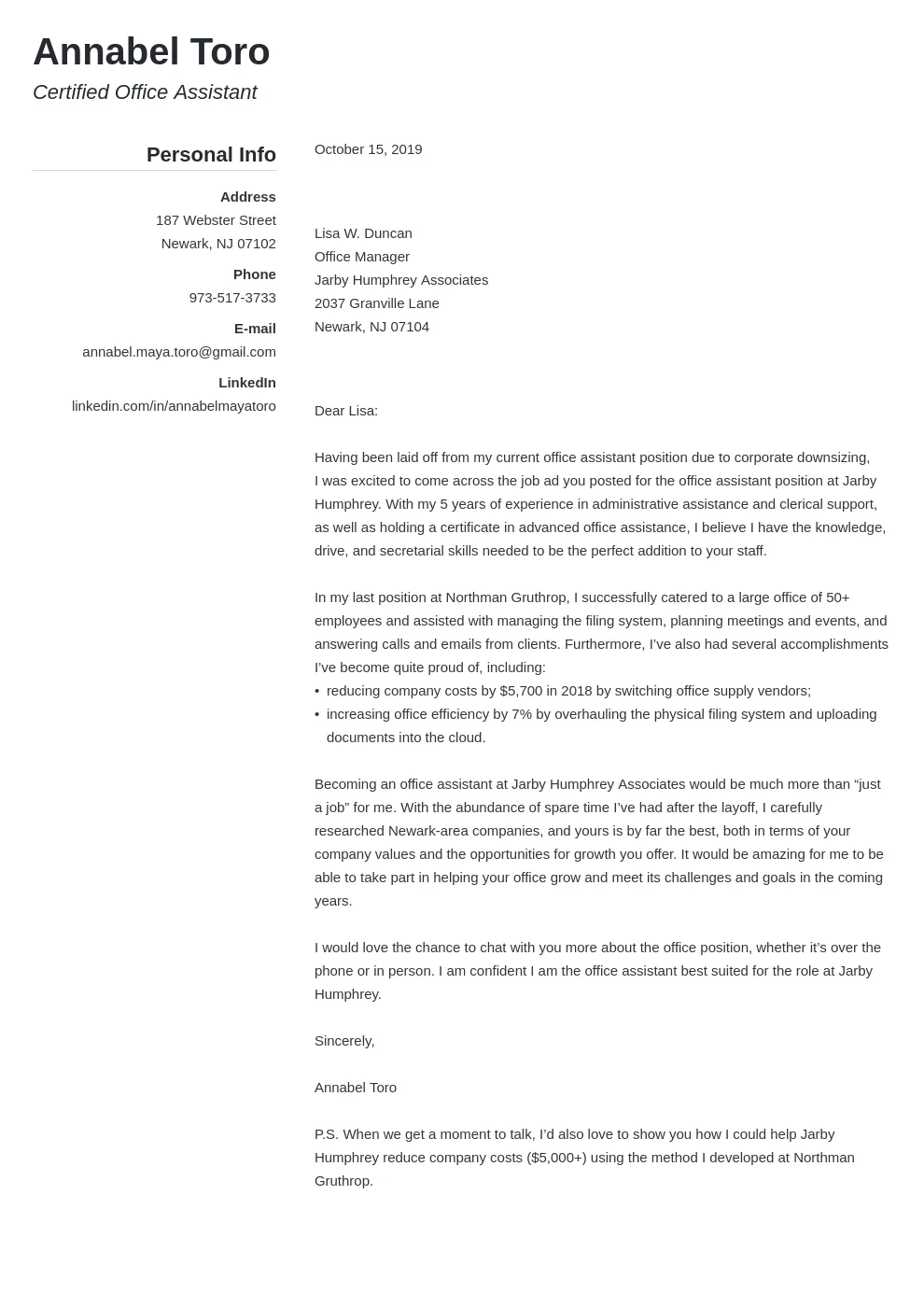What is a Cover Letter
A cover letter is a crucial document that accompanies your resume when applying for a job. It serves as your introduction to a potential employer, providing a more personalized and detailed overview of your qualifications and why you’re a suitable candidate for the position. Unlike a resume, which offers a summary of your skills and experience, a cover letter allows you to elaborate on specific accomplishments, demonstrate your personality, and express your enthusiasm for the role and the company. It’s an opportunity to connect with the hiring manager on a more personal level, setting you apart from other applicants and increasing your chances of getting an interview. The cover letter also highlights your understanding of the job requirements and how your skills and experience align with the position’s needs.
Why is a Cover Letter Important
In today’s competitive job market, a well-crafted cover letter can significantly boost your chances of landing an interview. It is an essential tool that allows you to demonstrate your communication skills, your understanding of the role, and your genuine interest in the company. It provides a space to showcase your personality, skills, and experiences in a way that goes beyond the basic information provided in your resume. Furthermore, a cover letter allows you to explain any gaps in your employment history, career transitions, or other circumstances that might need context. It can also be used to address the specific requirements of the job description, making a strong case for why you are the ideal candidate. When written effectively, a cover letter shows employers that you are serious about the opportunity and that you have taken the time to research the company and the role.
Key Components of a Cover Letter

A well-structured cover letter typically comprises several key components, each serving a specific purpose in showcasing your qualifications and interest in the job. These include a header with your contact information, a personalized salutation, an engaging opening paragraph, detailed body paragraphs highlighting relevant skills and achievements, a compelling closing paragraph, and a clear call to action. Each section is designed to provide a cohesive and compelling narrative that effectively communicates your value to the potential employer. Understanding the function of each component and how to structure them effectively is key to making a strong impression.
Header and Contact Information
The header of your cover letter should include your full name, address, phone number, and email address. It’s important to ensure this information is accurate and up-to-date, as it’s the primary means by which the employer will contact you. The header should also include the date and, if known, the name and title of the hiring manager or the person to whom you are addressing the letter. Professional formatting, like aligning the information to the left or right, can create a clean and organized appearance, making it easy for the recruiter to quickly find your contact details. Consistency with the information provided on your resume is crucial for a cohesive application.
Salutation
The salutation is your greeting to the hiring manager and sets the tone for the rest of your letter. Aim to personalize your salutation whenever possible by addressing the letter to a specific person using their name and title. Research the hiring manager’s name on the company website, LinkedIn, or other resources. Using a personalized salutation like “Dear Mr./Ms. [Last Name]” shows that you’ve taken the time to research the company and the specific role, demonstrating your attention to detail and genuine interest. If you are unable to find a specific name, using “Dear Hiring Manager” or “Dear [Department Name] Team” is acceptable.
Opening Paragraph

The opening paragraph is your first opportunity to grab the reader’s attention and create a positive impression. Clearly state the position you are applying for and where you found the job posting. Immediately highlight your key qualifications or a compelling reason why you’re a good fit for the role. Express enthusiasm for the opportunity and the company, showing that you’ve done your research and understand their mission or values. A strong opening paragraph sets the stage for the rest of the letter, enticing the hiring manager to continue reading and learn more about your skills and experience.
Body Paragraphs
The body paragraphs form the core of your cover letter and should provide detailed information about your skills, experience, and achievements. This is the space to demonstrate how your qualifications match the job requirements and why you are an ideal candidate. Each paragraph should focus on a specific skill or experience, using concrete examples and quantifiable results whenever possible to support your claims. Tailor your body paragraphs to align with the job description, highlighting the skills and experiences that are most relevant to the position. Focus on providing value to the employer by showcasing your accomplishments and what you can bring to the role.
Highlight Relevant Skills and Experience
In this section, emphasize the skills and experiences most pertinent to the job you’re applying for. Refer directly to the job description and identify the key skills and qualifications the employer is seeking. Provide specific examples from your past experiences where you have demonstrated these skills, and quantify your achievements whenever possible. Instead of merely listing your skills, explain how you applied them in real-world situations and the positive outcomes that resulted. This approach offers concrete evidence of your abilities and helps the hiring manager to envision how you can contribute to the company’s success.
Showcase Your Achievements

Use this section to showcase your achievements, demonstrating your capabilities and value to the employer. Focus on quantifiable results and use the STAR method (Situation, Task, Action, Result) to structure your examples. Describe the situation, the task you were assigned, the actions you took, and the positive results you achieved. Quantify your achievements whenever possible, using numbers and data to demonstrate your impact. For example, instead of saying “Improved customer satisfaction,” say “Increased customer satisfaction by 15% through the implementation of a new customer service protocol.” Highlighting your achievements makes a compelling case for your candidacy.
Tailor the Cover Letter to the Job
Customizing your cover letter for each job application is crucial to demonstrating your genuine interest and suitability. Do not use a generic cover letter. Carefully review the job description and identify the specific requirements, skills, and qualifications the employer is seeking. Then, adapt your cover letter to address these requirements directly. Highlight your relevant experiences, skills, and achievements that align with the job description. Show the hiring manager that you understand the company’s needs and how you can contribute to their success. This personalization sets you apart from generic applicants and increases your chances of success.
Closing Paragraph
The closing paragraph should summarize your key qualifications and reiterate your interest in the position. Restate your enthusiasm for the opportunity and reinforce your value proposition. Thank the hiring manager for their time and consideration. Make sure to keep the tone positive and professional, leaving a lasting impression of your enthusiasm and suitability for the role.
Call to Action

Include a clear call to action in your closing paragraph, indicating your desire for an interview. State your availability and willingness to discuss your qualifications further. You can suggest a follow-up by saying, “I am eager to learn more about this opportunity and discuss how my skills and experience align with your needs. I am available for an interview at your earliest convenience.” This proactive approach shows your interest and makes it easy for the hiring manager to take the next step.
Formatting and Style Tips
The format and style of your cover letter are essential for making a professional and positive impression. A well-formatted and easy-to-read letter shows that you pay attention to detail and that you are organized. It should be clean, concise, and visually appealing. Choose a professional font, use clear headings and subheadings, and maintain consistent margins and spacing. The tone of your letter should be professional and enthusiastic, reflecting your interest in the position and the company. Proofread carefully to ensure there are no typos or grammatical errors, which can detract from your credibility. The overall appearance of the letter should be polished and easy to read.
Keep It Concise and Focused
Keep your cover letter concise and focused, aiming for one page in length. Focus on the most relevant information and avoid unnecessary details. The hiring manager is likely reviewing many applications, so make sure your cover letter is easy to read and quickly highlights your key qualifications. Use concise language and avoid long, complex sentences. Get to the point and highlight your value to the employer without excessive wordiness. Prioritize the information that directly addresses the job requirements and clearly communicates your suitability for the role.
Use Action Verbs

Enhance your cover letter’s impact by using strong action verbs. Action verbs make your statements more dynamic and engaging, conveying a sense of accomplishment and initiative. Start sentences with verbs that show your accomplishments and skills, such as “Managed,” “Developed,” “Implemented,” “Led,” “Achieved,” “Created,” or “Increased.” This approach highlights your contributions and accomplishments in a more effective and memorable way. When describing your experience and skills, use action verbs to demonstrate your abilities and showcase your value to the employer.
Proofread Carefully
Proofreading is an essential step in cover letter writing. Thoroughly review your cover letter for any typos, grammatical errors, and inconsistencies. Errors can create a negative impression and undermine your credibility. Before submitting your cover letter, read it carefully multiple times. Proofread slowly, paying attention to detail and checking for any mistakes. Ask a friend, family member, or career advisor to review your cover letter. Another set of eyes can often catch errors that you might miss. Accurate and error-free cover letters demonstrate professionalism and attention to detail.
Common Cover Letter Mistakes to Avoid
Avoiding common cover letter mistakes is crucial for making a positive impression. Some errors can make your application less appealing. Making sure you avoid generic letters, typos, and lack of tailoring helps you put your best foot forward and increases the chances of your application succeeding.
Generic Letters

Avoid sending a generic cover letter to multiple employers. Using a one-size-fits-all cover letter diminishes your chances of making a strong impression. Employers can easily spot a generic cover letter that has not been tailored to their specific requirements. Customizing your cover letter for each job application demonstrates your genuine interest in the role and the company. Research the company and the job description and tailor your letter to highlight the skills and experiences that are most relevant to the specific position. Personalization shows that you have put in the effort to understand the role and are genuinely interested in the opportunity.
Typos and Grammatical Errors
Typos and grammatical errors can damage your credibility. Errors make you appear careless and unprofessional. Before submitting your cover letter, meticulously proofread it for spelling mistakes, grammatical errors, and punctuation issues. Read your letter multiple times and use a grammar checker to help identify any errors you may have missed. Ask a friend, family member, or career advisor to review your letter. A fresh perspective can often catch mistakes that you might overlook. An error-free cover letter demonstrates attention to detail and professionalism.
Not Tailoring to the Specific Job
Failing to tailor your cover letter to the specific job requirements is a common mistake that can significantly reduce your chances of success. Recruiters want to see that you’ve read the job description and understand the requirements. To address this, review the job description carefully, identifying the key skills, qualifications, and experiences the employer is seeking. Then, tailor your cover letter to directly address these requirements. Highlight the relevant skills and experiences from your background that align with the job description, providing concrete examples and quantifiable results to support your claims. Show that you understand the company’s needs and how you can contribute to its success. This personalization demonstrates your genuine interest and increases your chances of getting an interview.
Examples of Cover Letters That Stand Out
To gain inspiration and understand what makes a cover letter effective, it is beneficial to review examples of successful cover letters. These examples offer insights into the key components, formatting, and tone that can enhance your application. Look for letters that clearly articulate the applicant’s skills and experience, tailor the content to the specific job description, and showcase the applicant’s personality and enthusiasm. Analyze how these examples use strong action verbs, quantify achievements, and create a compelling narrative that captures the hiring manager’s attention. Use these examples as a guide to craft your cover letter that helps you stand out.
